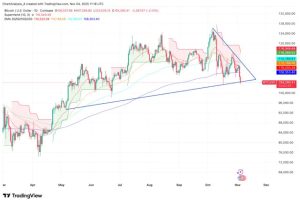Gold vs. Bitcoin: Interpreting Market Signals in an Evolving Investment Landscape

Gold and Bitcoin, often compared as alternative stores of value, continue to offer critical insights into investor sentiment, market liquidity, and macroeconomic trends. While gold has historically served as a hedge against inflation and geopolitical uncertainty, Bitcoin’s digital scarcity and decentralized nature provide a modern counterpart for risk-adjusted diversification. Recent price movements in both assets suggest nuanced shifts in investor behavior, with correlations, volatility patterns, and capital flows offering signals about broader financial conditions. Analysts argue that interpreting these clues can inform portfolio strategy, risk management, and the evolving dialogue between traditional and digital financial markets.
Gold’s Enduring Role as a Safe Haven
Gold’s market performance continues to reflect macroeconomic pressures, including inflation expectations, currency fluctuations, and geopolitical risks. Historically, investors have gravitated toward gold during periods of uncertainty, leveraging its stability to preserve purchasing power. Recent trends indicate that central-bank policies and interest-rate expectations are heavily influencing gold demand, highlighting the metal’s continuing relevance in a balanced portfolio. Analysts emphasize that monitoring gold flows provides early signals for potential market stress or capital rotation across asset classes.
Bitcoin as the Digital Counterpart
Bitcoin offers a distinct set of signals compared with traditional safe-haven assets. Its finite supply, decentralized ledger, and growing institutional adoption position it as a modern alternative store of value. Price action, network activity, and investor positioning in Bitcoin often reveal shifts in market sentiment, particularly among risk-tolerant investors seeking exposure outside conventional financial systems. Observers note that Bitcoin’s volatility can amplify signals, offering insights into speculative behavior, liquidity constraints, and market confidence in emerging financial technologies.
Correlation and Divergence: Interpreting Clues
While gold and Bitcoin occasionally move in tandem during periods of macroeconomic stress, divergences between the two can highlight changing risk appetites. Analysts monitor correlation patterns to identify capital rotation between traditional and digital assets, using these insights to anticipate market shifts. For instance, when gold remains stable while Bitcoin surges, it may suggest speculative inflows or confidence in the resilience of crypto markets. Conversely, synchronized movements may indicate broader risk-off sentiment affecting multiple asset classes simultaneously.
Strategic Implications for Investors
Understanding the interplay between gold and Bitcoin offers practical benefits for portfolio construction. Investors can leverage combined signals to enhance diversification, manage volatility, and gauge risk exposure. Market intelligence derived from price trends, liquidity, and capital flows enables a more nuanced approach to asset allocation. Financial strategists emphasize that interpreting these clues requires both quantitative analysis and an appreciation of macroeconomic narratives shaping investor behavior.
Conclusion: Reading the Market Through Asset Signals
Gold and Bitcoin together provide a multidimensional view of market dynamics. While one anchors portfolios with historical stability, the other offers forward-looking signals tied to innovation and digital finance. Investors who carefully analyze movements, correlations, and divergences between these assets gain a clearer understanding of market sentiment, risk tolerance, and emerging trends. As global finance evolves, integrating insights from both traditional and digital stores of value becomes increasingly critical for informed decision-making.



